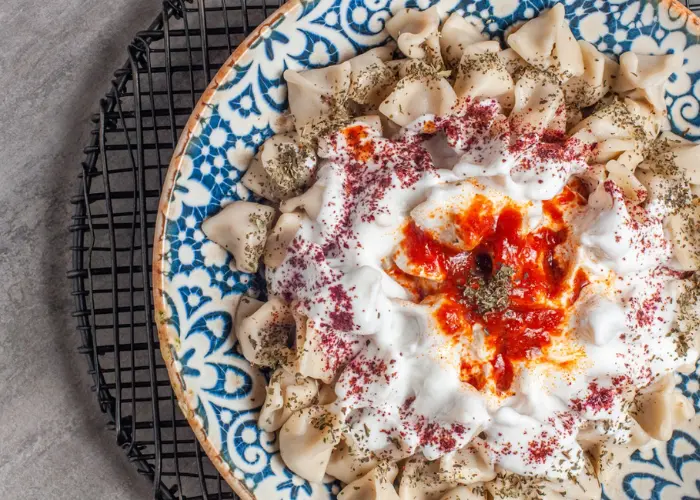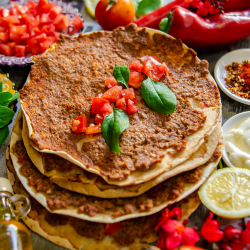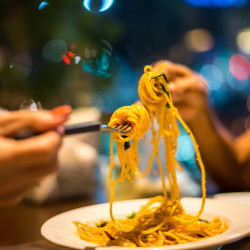The Origin of Mantı
Mantı, which has been a part of Turkish cuisine and Central Asian cuisine from the past to the present, is a very popular dish. Also, ravioli is consumed in the Balkans. Ravioli are served with different ingredients and sauces with different names in different countries. As a cultural heritage, it has been on the table for years. In Central Asian countries, ravioli is diversified by adding ingredients such as potatoes, chickpeas, lentils, and cubed meat. Manti, which can be fried even in the oven, varies from region to region. So, where does this delicious dish originate?
The Chinese word “mantou” is known as the basis of the word mantı. There is information that similar dishes were produced and consumed in China. It is accepted that this dish was transported from Central Asia to Anatolia by the Turks and Mongols via the Silk Road. Horsemen carried dried or frozen mini ravioli along the way. They built a campfire and made it easily edible. In addition, it was constantly made in the Ottoman palace cuisine. After all this history, let’s talk about mini ravioli in Turkish cuisine.
Mantı, which is identified with the province of Kayseri, was registered by the Turkish Patent and Trademark Office and received a geographical indication certificate in 2009. The mantı dish made in Kayseri is smaller than in other regions. The reason for this comes from tradition. In Kayseri, in ancient times, brides-to-be were asked to make mini ravioli. The bride-to-be girls have to fit 40 of the ravioli they make into a spoon. Because if they can make ravioli in this way, it indicates that the girls are doing a delicate and talented job.
If you wonder what things to eat in Istanbul, let us meet you in the most amazing places.
Best Places to Eat Mantı

Unchanged taste since 1987: Aşkana Mantı
Established a quarter of a century ago by a Tatar family in a quiet corner of Ulus, Aşkana Mantı means soup kitchen in Tatar. Maintaining its leadership among the best ravioli in Turkey since 1987, Aşkana Mantı offers the best service to its customers without compromising quality. If you go to the place that prepares its ravioli daily, do not return without eating “çibörek.”
The venue that has been serving in Bahariye for more than 40 years: Sayla Mantı
If you are in Kadıköy, it is one of the most successful mantı you can eat. Even though Sayla ravioli of years is not a Kayseri ravioli, it is an experienced family business that always provides quality service with its classic taste.
Unusual flavor eggplant ravioli: Yeni Lokanta, Beyoğlu
Yeni Lokanta is home to people who are fond of traditional tastes and taste buds. When you go, make sure to try the eggplant ravioli made with Antakya’s unique salted yogurt. Note this restaurant if you want to have a peaceful dinner.
Colorful mini ravioli: Hıngal Mantı,Beykoz
You can find all kinds of ravioli you are looking for in this place where Dagestan ravioli is famous. Breakfast and ravioli are the main service areas and products such as icli kofte. Natural colorants are used in ravioli. It has blue vegetables, black salmon fish, white-green colored meat-nettle, brown-colored cheese-brown, red minced meat-spicy, and more. Our advice: if you go here, don’t forget to drink basil sherbet.
For vegetarians and those on a gluten-free diet: Şefo Mantı, Yeşilköy
It is a small, cozy place in the center of Yeşilköy, 5 minutes' walking distance from the beach. It serves different types such as Tatar ravioli, Chefo ravioli, and fried Tatar ravioli. Their dough is thin, the mince is sufficient, and the yogurt and sauce are just right.
Ingredients for Turkish mantı Recipe
If you want to make it at home instead of going to all the beautiful and delicious places we recommend, we have a recipe for you.
For the ravioli stuffing, finely chopped onion, minced meat, salt, and pepper are blended in a deep bowl. Optionally, finely chopped parsley, ground pepper, and basil can be added to the stuffing.
For the dough:
-
3water glass Fame
-
1 water glass warm water
-
1 egg
-
One teaspoon salt
For the mortar:
-
250-gram mince
-
One medium-size onion
-
One teaspoon salt
-
½ teaspoon black pepper
-
½ teaspoon chili pepper
For the sauce:
For the above:
-
1 Stamp garlic yoğurt
-
1 teaspoon Mint
-
1 teaspoon chili pepper
For the ravioli dough, flour is placed in a deep bowl. Add salt, egg, and warm water to the flour and form a dough. The rested dough is first divided into several equal parts. The rolled ravioli dough is cut into 1.5 cm squares. The inner pilgrimage is divided into these squares, and the square dough pieces are joined at four ends and closed. The closing process can optionally be made in a triangle by joining the two ends. Ravioli are thrown into the water to be boiled. It is served after drizzling garlic yogurt and chili pepper butter sauce.
Frequently Asked Question
What is in Turkish manti?
Turkish manti simply consists of dough and ground meat.
What is Turkish manti made of?
Turkish manti is made of dough and grounded, spiced meat.
What is traditional Turkish food?
Traditional Turkish food ranges from iskender kebab to manti, with many desserts like baklava.
Where does manti come from?
Manti was originally from central Asia, and then brought to Turkey.
Can you freeze manti?
Yes, you can freeze your manti to store them in your freezer indefinitely.
 Spanish
Spanish  Indonesian
Indonesian  Urdu
Urdu  Taiwanese
Taiwanese  Russian
Russian  Romanian
Romanian  Portuguese
Portuguese  Persian
Persian  Macedonian
Macedonian  Korean
Korean  Japanese
Japanese  Italian
Italian  Indian
Indian  Hungarian
Hungarian  Greek
Greek  German
German  Croatian
Croatian  Chinese
Chinese  Bulgarian
Bulgarian  Arabic
Arabic  French
French  English
English 




